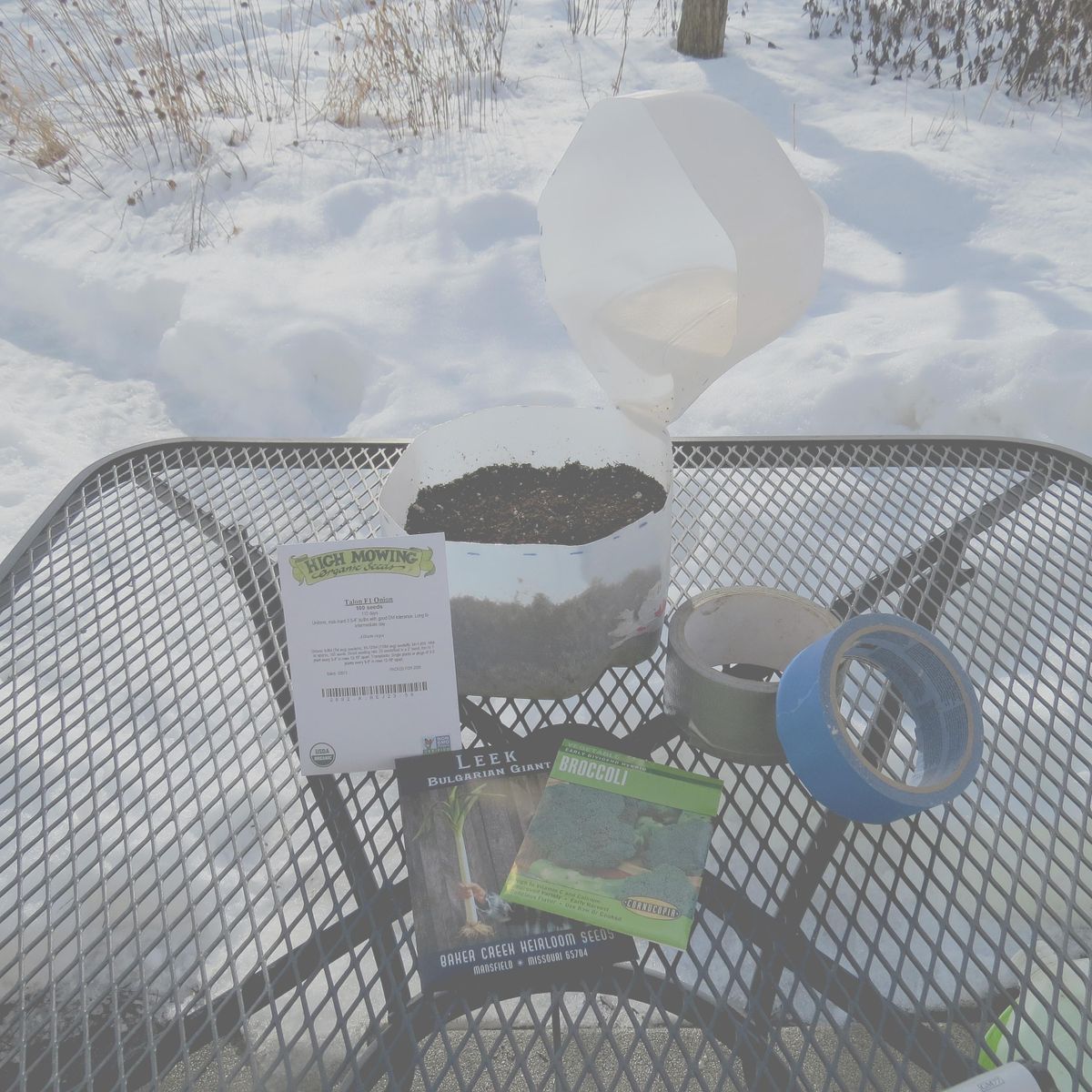In the Garden: Give seeds a cold start

Who enjoys doing fun DIY projects? And what if those projects involved gardening in the dead of winter?
Today’s topic is winter sowing, and I’ll bet you will want to get started as soon as you’ve finished reading this. If you haven’t heard of winter sowing before, it seems like it’s all the rage these days. I’ve heard about it on podcasts, watched videos and read social media posts extolling the virtues of this unusual technique.
The concept involves starting seeds outside in the dead of winter so the seedlings will be in great shape by planting time in our gardens. Don’t worry, I haven’t forgotten we live in a cold climate and that actually working in our gardens is still several weeks away.
By sowing seeds outdoors in modified containers, the seeds will determine the right time to germinate rather than relying on a gardener to plant them at the most ideal time. Thanks to good air circulation, there’s no risk of the seedlings being killed off by the fungal disease called damping-off.
When it’s time to plant them in the garden, they will already have acclimated to our temperatures and sunlight. What’s more, this method does not require seed-starting space indoors under grow lights, special equipment or fussing over the seedlings for weeks.
Start by collecting plastic half-gallon or one-gallon milk jugs, large pop bottles or takeout containers with a deep bottom and lid (think roast chicken from the grocery store). Other supplies are seeds, potting soil, duct tape or masking tape and a waterproof marker.
Sterile potting soil works best; avoid choosing mixes that contain fertilizer or water-retaining polymers. Do not use garden soil because it is too heavy for seed germination and might contain pathogens.
For tools, you’ll need a box-cutter, heavy-duty pair of scissors or a small knife for punching holes in the containers. Here are the steps:
1. Start with clean containers. Punch holes in the top of the container to allow your planting to get much-needed moisture in the form of rain or snow, and make drainage holes in the bottom. Remove the screw-on lid.
2. If using a milk jug or pop bottle, cut it in half crosswise so the lower half is 4 to 5 inches deep; leave about 2 inches of the top portion connected to the bottom. The purpose of removing most of the upper portion is to make it easier to fill the lower half with potting soil and plant seeds.
3. Pre-moisten the potting soil and place 3 to 4 inches of it into the lower half of the container; press down slightly to compact it.
4. Sprinkle seeds on the top of the soil. It isn’t necessary to cover tiny seeds, but press larger seeds such as peas or sunflowers into the soil and/or cover them with additional soil according to the packet directions. Lightly water in the seeds.
5. Replace the upper half of the container and use tape to attach it to the lower half.
6. Use a waterproof marker to note which seeds you planted and the date.
7. Place the container outside where it will get sunlight, rain and snow. Do not locate it under the eaves of your house or beneath other structures because the seeds and seedlings must get moisture and light. Make sure the containers won’t get blown over.
8. Here’s the easy part: The container won’t need any attention until temperatures begin to warm up. When the majority of the seeds have germinated, cut a little window in the upper portion of the container to increase air circulation. Be sure to keep an eye on the soil moisture from now on.
9. Once the seedlings fill the container, it’s time to transplant them into the garden. Since they have been outside all this time, they won’t require hardening off, which is the time-consuming process of slowly exposing them to sunlight and temperatures before planting.
Winter sowing is an easy, low-cost way to end up with a bunch of seedlings that you didn’t have to fuss over. And besides we all love to learn new things, right? Find out more about winter sowing in this week’s “Everyone Can Grow a Garden” video at youtube.com/c/susansinthegarden.
Susan Mulvihill is co-author, with Pat Munts,
of “Northwest Gardener’s Handbook.”
Contact her at susan@susansinthegarden.com.